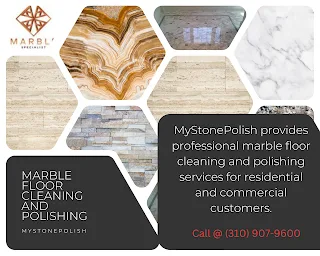Marble Floor Cleaning and Polishing: Restoring the Elegance of Your Space
Marble floors have long been admired for their timeless beauty and elegance. Whether in residential homes, commercial buildings, or prestigious institutions, the lustrous surface of marble adds a touch of luxury to any space. However, over time, foot traffic, spills, and general wear and tear can dull its natural shine. Thankfully, with proper cleaning and polishing techniques, you can restore the grandeur of your marble floors and keep them looking impeccable for years to come.
Understanding Marble Floors
Before delving into the cleaning and polishing process, it is crucial to understand the characteristics of marble. Marble is a metamorphic rock composed of calcite or dolomite minerals, which gives it its distinct veining patterns and unique color variations. Despite its durability, marble is still susceptible to damage from acidic substances, abrasive cleaners, and improper maintenance techniques.
Cleaning Marble Floors
Dust and Sweep: Begin by removing loose dirt and debris from the floor using a soft broom or a dust mop. This step is essential to prevent scratches during the cleaning process.
Gentle Cleaning Solutions: Use a pH-neutral cleaner specifically formulated for marble floors. Avoid acidic or abrasive cleaners as they can etch the surface of the marble. Dilute the cleaner according to the manufacturer's instructions and mop the floor, ensuring even coverage.
Spot Cleaning: For stubborn stains or spills, address them promptly using a soft, damp cloth. Blot the area gently instead of rubbing to prevent further damage. If necessary, consult with a professional to remove tough stains.
Rinse and Dry: After mopping, rinse the marble floor thoroughly with clean water to remove any residue. Wipe the floor dry using a soft, absorbent cloth to prevent water spots and streaks.
Polishing Marble Floors
Honing: If your marble floor has lost its shine and developed scratches, honing may be required. Honing involves using abrasive pads to remove the damaged layer of marble, revealing a fresh surface. It is best to entrust this task to a professional who can achieve optimal results without causing further harm to the marble.
Polishing: Once the floor is honed, it is time to restore its luster through the polishing process. Polishing is typically done using a mechanical polisher and progressively finer abrasive pads. These pads buff the marble, bringing out its natural shine. Special polishing powders may also be used to achieve a high gloss finish.
Sealing: To protect the newly polished marble floor, it is advisable to apply a sealant. The sealant creates a protective barrier, guarding against spills, stains, and moisture penetration. Consult with a professional to choose the appropriate sealant for your specific type of marble.
Maintenance Tips for Longevity
To ensure the long-lasting beauty of your marble floors, consider the following maintenance tips:
Regular Cleaning: Establish a routine of regular cleaning using a pH-neutral cleaner. Avoid using vinegar, lemon juice, or any acidic substances that can etch the marble.
Prompt Spill Cleanup: Wipe up spills immediately to prevent staining and damage. Be cautious with acidic liquids like citrus juices, wine, and coffee, as they can be particularly harmful to marble surfaces.
Use Mats and Rugs: Place doormats at entrances and rugs in high-traffic areas to minimize the amount of dirt and grit brought onto the marble floor.
Avoid Abrasive Materials: Steer clear of abrasive cleaners, scrub brushes, and rough materials that can scratch the marble surface.
Regular Maintenance: Periodically assess the condition of your marble floors. If dullness or scratches appear, contact a professional restoration service to restore its shine.




Comments
Post a Comment